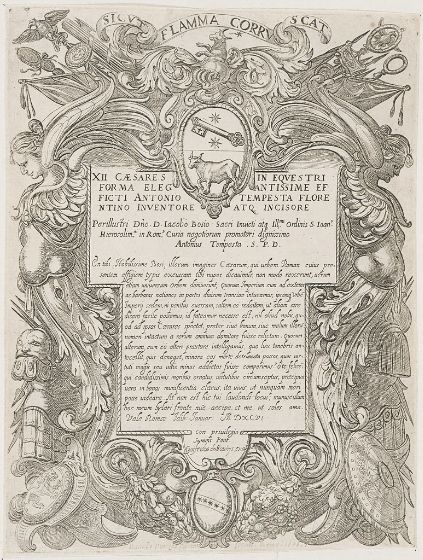A Set of Twelve Porphyry and Marble Panels Depicting Roman Emperors
Italian, circa 1840
Each numbered and stamped on the reverse with a double headed eagle,
and with the stamp of a cardinal
Each panel: 11 in (27.5 cm) high, 9 7/8 in (24.6 cm) wide
cf. C. Suetonius Tranquillus, translated by Jabez Hughes, The Lives of the XII Caesars, 1717, vol. I–vol. II
Each panel: 11 in (27.5 cm) high, 9 7/8 in (24.6 cm) wide
cf. C. Suetonius Tranquillus, translated by Jabez Hughes, The Lives of the XII Caesars, 1717, vol. I–vol. II
From the late 17th century throughout the following two centuries, virtually every British and Northern European gentleman of stature made a Grand Tour as part of his necessary education. This set of panels is a fine example of a Grand Tour souvenir, and depicts twelve Roman Emperors (from the top left): Nero, Augustus, Vespatian, Caligula, Domitian, Claudius, Tiberius, Otho, Julius Caesar, Galba, Titus and Vitellius. Each Emperor is seen in profile and carved from a white marble roundel framed by porphyry. Black Belgian marble frames a border of inlaid ancient and 19th-century geological specimen squares including nero antico, alabastro, olive alabastro, lumachella, porta santa, bardiglio, giallo antico, lumarchellone, verde antico, alabastro listato, alabastro pecorella, alabastro cipollino rosso, pavonazzetto, verde malachite, lapis lazuli, portoro, etc. Souvenirs of this type were sought after, and such a set of twelve Emperors would have been especially rare and desirable, involving great expense. Once shipped home, they would have been exhibited as symbols of status and a focus for discussion by gentlemen who could demonstrate their knowledge of each specimen type.
Each panel is stamped on the reverse with a double headed eagle, possibly indicative of the Habsburg Empire, and a cardinal’s stamp, together with a numbered paper label. These marks suggest that the plaques may have been given as a diplomatic gift from a cardinal to a member of the Habsburg family.














